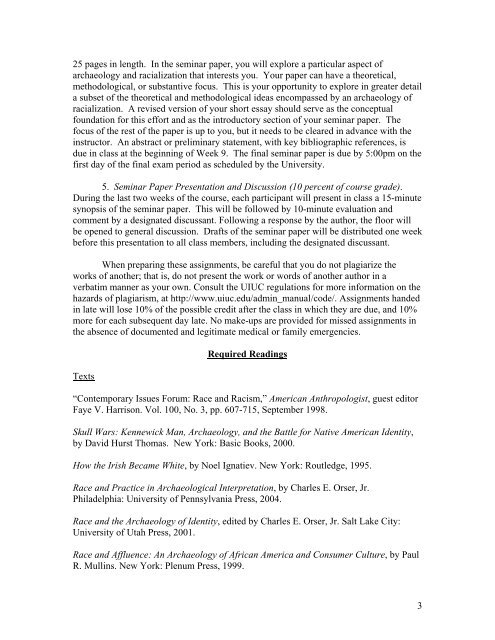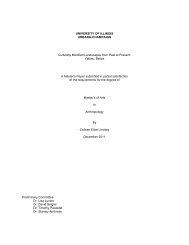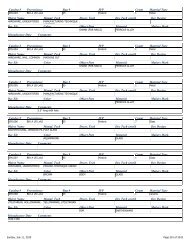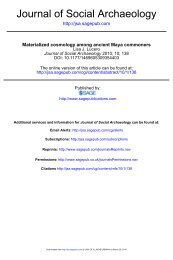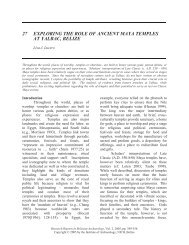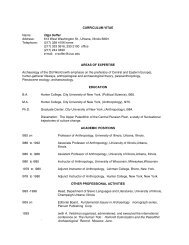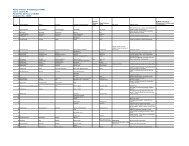Historical Archaeology - Department of Anthropology
Historical Archaeology - Department of Anthropology
Historical Archaeology - Department of Anthropology
Create successful ePaper yourself
Turn your PDF publications into a flip-book with our unique Google optimized e-Paper software.
25 pages in length. In the seminar paper, you will explore a particular aspect <strong>of</strong>archaeology and racialization that interests you. Your paper can have a theoretical,methodological, or substantive focus. This is your opportunity to explore in greater detaila subset <strong>of</strong> the theoretical and methodological ideas encompassed by an archaeology <strong>of</strong>racialization. A revised version <strong>of</strong> your short essay should serve as the conceptualfoundation for this effort and as the introductory section <strong>of</strong> your seminar paper. Thefocus <strong>of</strong> the rest <strong>of</strong> the paper is up to you, but it needs to be cleared in advance with theinstructor. An abstract or preliminary statement, with key bibliographic references, isdue in class at the beginning <strong>of</strong> Week 9. The final seminar paper is due by 5:00pm on thefirst day <strong>of</strong> the final exam period as scheduled by the University.5. Seminar Paper Presentation and Discussion (10 percent <strong>of</strong> course grade).During the last two weeks <strong>of</strong> the course, each participant will present in class a 15-minutesynopsis <strong>of</strong> the seminar paper. This will be followed by 10-minute evaluation andcomment by a designated discussant. Following a response by the author, the floor willbe opened to general discussion. Drafts <strong>of</strong> the seminar paper will be distributed one weekbefore this presentation to all class members, including the designated discussant.When preparing these assignments, be careful that you do not plagiarize theworks <strong>of</strong> another; that is, do not present the work or words <strong>of</strong> another author in averbatim manner as your own. Consult the UIUC regulations for more information on thehazards <strong>of</strong> plagiarism, at http://www.uiuc.edu/admin_manual/code/. Assignments handedin late will lose 10% <strong>of</strong> the possible credit after the class in which they are due, and 10%more for each subsequent day late. No make-ups are provided for missed assignments inthe absence <strong>of</strong> documented and legitimate medical or family emergencies.TextsRequired Readings“Contemporary Issues Forum: Race and Racism,” American Anthropologist, guest editorFaye V. Harrison. Vol. 100, No. 3, pp. 607-715, September 1998.Skull Wars: Kennewick Man, <strong>Archaeology</strong>, and the Battle for Native American Identity,by David Hurst Thomas. New York: Basic Books, 2000.How the Irish Became White, by Noel Ignatiev. New York: Routledge, 1995.Race and Practice in Archaeological Interpretation, by Charles E. Orser, Jr.Philadelphia: University <strong>of</strong> Pennsylvania Press, 2004.Race and the <strong>Archaeology</strong> <strong>of</strong> Identity, edited by Charles E. Orser, Jr. Salt Lake City:University <strong>of</strong> Utah Press, 2001.Race and Affluence: An <strong>Archaeology</strong> <strong>of</strong> African America and Consumer Culture, by PaulR. Mullins. New York: Plenum Press, 1999.3


